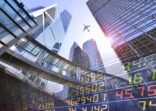The value proposition of robo-advisories, based on low-cost and transparency, limits the providers’ ability to generate fees, notes Reynolds.
Furthermore, as a result of many start-ups entering the space, the acquisition cost per client is relatively high.
These challenges are particularly pronounced in the markets of Southeast Asia, each with its own regulations and a fraction of the size of Europe or the US.
“Each local regulator wants people to invest in products listed on their local market,” said Reynolds. An ETF-based robo-advisory platform would have to provide tailored portfolios of locally-listed products for each market.
The need to customise the offering and the separate application process required in each market raise the client acquisition cost, making entry to the market difficult, especially for start-ups.
On the other hand, Asian investors may be more open to adopting robo-advisory services than their counterparts in Europe and the US. “[They are] a very digital population, a very value-to-money focused population,” said Reynolds.
While private banks offer concierge-style approach to investment advice, self-service robo-advisory platforms represent the opposite end of the spectrum. “Traditional private banks haven’t done as well in [Asia] as they have in Europe,” said Reynolds. “There’s a chance for the robo-advisory space to grab a bigger share of assets than they have in Europe, and relatively quickly.”
ETF strategy
Despite the challenges, Denmark’s Saxo Bank is planning to launch a robo-adivsory platform, SaxoSelect, in Singapore, Hong Kong and Australia later in 2017.
The platform was initially launched in Europe in January 2016. In partnership with Blackrock and Morningstar, SaxoSelect offers portfolios built of iShares ETFs and value-oriented stock portfolios based on Morningstar’s economic moat rating.
Reynolds said optimal asset allocation is the most important factor for portfolio construction, and ETFs are the most cost-efficient tool to implement it.
Saxo also provides brokerage services to active traders as well as technology and infrastructure to other financial service providers, and therefore believes it has an advantage in robo-advisory services.
“The robo-advisory space is for us both a partner and a competitor,” said Reynolds. “This dynamic is not unusual for Saxo.”
In Europe, the bank’s active trader clients have been the main target for its robo-advisory platform. Active traders use on average 10%-20% of liquid assets for trading, according to Reynolds. The rest is invested in property or mutual funds.
“We want to capture more and more of that part of their money that’s not held at Saxo for trading purposes,” said Reynolds.
















